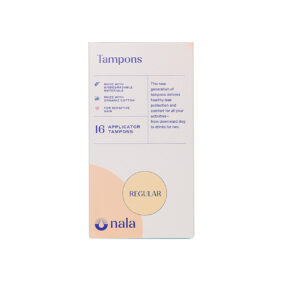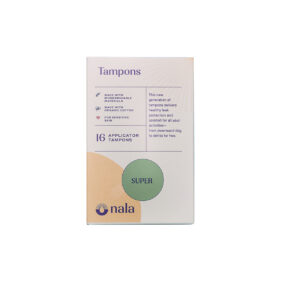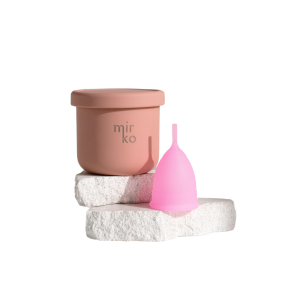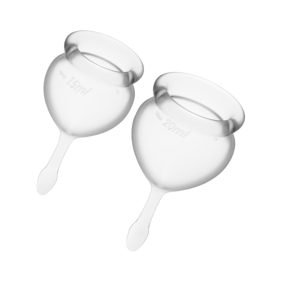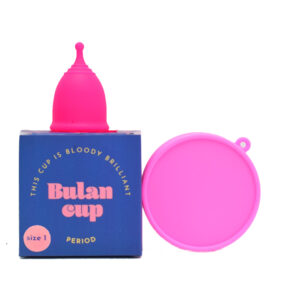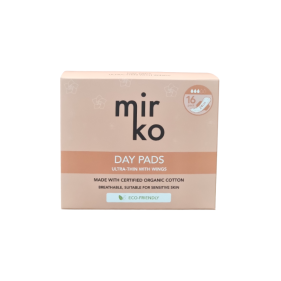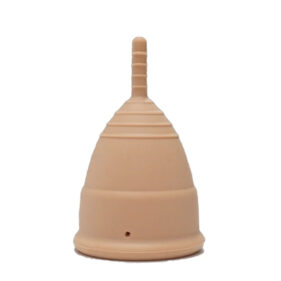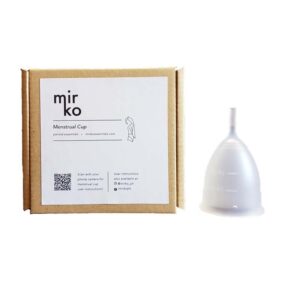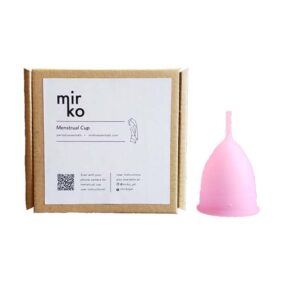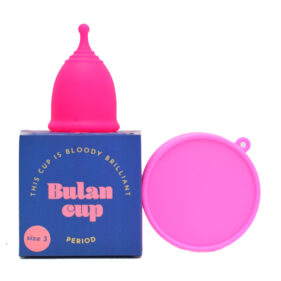
Turns out that the usual red color of period blood isn’t the only shade out there. Heck, even the red shade can come in different hues! The color of your period blood can range from pink to brown and changes for multiple reasons. Some can be good, while others require a medical professional consultation.
Remember that your period varies with another person’s period. Plus, even the color of your period blood can switch per month depending on your lifestyle changes.
In this article, we’ll tackle each color of period blood out there and what they may mean for your health. We’ll also review how your menstruation works, how to take care of yourself during your period, and signs to see a medical professional based on the color of your period blood.
Menstruation 101

Cleveland Clinic defines menstruation as “the monthly shedding of your uterine lining, wherein one releases menstrual blood”. This type of discharge is half-blood, half uterine tissue, and it flows from your uterus to your cervix, then out of your vagina.
It’s driven by the hormones from your brain (pituitary gland) and ovaries. These messengers are responsible for thickening your endometrium, or your inner uterine lining. They would anticipate a fertilized egg from the fallopian tubes to attach and develop, or in other words, the process of pregnancy. If that’s not the case, the lining sheds and bleeds.
And alas, you have your period. If you think about it, it’s almost like an internal act of rebellion. No baby? Blood gushes down like crazy, and many other side effects we didn’t ask for. Just great, isn’t it?
On average, a period or menstrual cycle lasts 3-7 days.
Why Does the Color of Period Blood Change
It’s normal for your period blood to change colors every cycle, usually between the shades of red, brown, and black. You can have the brightest red shade on your first day, then the brownest shade on the last, signaling that your period is done.
But any shade outside the ones we mention may say otherwise. We’ll get more in-depth about each color with its detailed meanings, but a few factors determine a change in period blood color.
1 The Duration of Blood Staying In Your Body

The longer blood stays in the uterus, the more oxygen it reacts to. Because of this, it darkens the hue of the blood. Vice versa, the shorter it stays in your body, the brighter the blood color is.
2 Hormonal Changes

During menstruation, estrogen and progesterone levels decrease because conception didn’t occur. From here, you’d feel a shift in your mood, leaning towards the negative side. Menstrual cramps, headaches, and fatigue can occur during this time, depending on the person. These effects are usually alleviated through medication and rest.
3 Diagnosed Medical Conditions

Some medical conditions can directly impact your menstrual cycle, including the color of your period. It’s crucial to consult your doctor about them and how to move forward in taking care of your health. Examples of conditions, which will be further discussed later on, are Polycystic Ovarian Syndrome (PCOS) and Anemia.
-
₱429.00
-
₱439.00
The Color Breakdown of Period Blood
So, the question stands: why do we bleed in different colors? In this section, we’ll go into deeper detail on the various period blood colors out there, what they mean, and the possible points of concern that need attention.
1 Bright Red

The freshest period blood color out there! The fastest to exit your system and the shade that stands out to you at first glance too. For some of us, this color of period blood is consistent throughout the monthly cycle. Then for others, it can darken or turn brown.
Usually, this color of period blood is accompanied by menstrual cramps in your abdomen. This is due to an increase in the production of prostaglandins, causing the smooth muscle in the uterus to contract.
Aside from this, more possibilities lead to having a bright red period color. They include:
- Miscarriage: Alongside extreme abdominal cramps and dizziness, ou must get checked ASAP when this occurs, or any sort of bleeding during your pregnancy.
- Pregnancy: Specifically an ectopic one, which can lead to this color of period blood.
- Contracting a sexually transmitted infection: From gonorrhea to chlamydia, these infections can urge your body to bleed and cause pain as you either do the deed or urinate. It can even smell if left untreated. Yeast infections are included here too.
- Uterine polyps or fibroids: Non-cancerous growths found in the womb, can lead to heavy bleeding. They also vary in size, followed by other symptoms such as pelvic pain and more than a week-long menstrual periods.
- Adenomyosis: It results in heavy, tormenting periods as the endometrial tissue grows into the muscular wall of the uterus.
-
₱980.00
-
₱850.00
2 Dark Red

The type of blood you see after getting up in the morning or lying down for a long time. Also, the common type that stains the sheets or your underwear, which we want to avoid! This color may result from gravity as the blood stays in your uterus for a while before exiting.
More reasons to gain this color of period blood include:
- A marker signaling the end of your period: During that time, it slows down.
- Lochia: The latter is another term to refer to postpartum bleeding, or bleeding after childbirth. Expect the flow to be strong and dark in the next 3 days, then slows down with the same shade.
3 Brown

This color of period blood results from maximum oxidation or staying in the uterus for much longer. It can show up during the start or end of one’s period because they’re the slowest times of your entire cycle. In some cases, they can be remaining blood from your previous cycle.
More reasons behind the brown color of period blood include:
- Pregnancy: This shade can be seen through spotting, which is a sign of implantation. This occurs 10-14 days after conception.
- Lochia: Postpartum bleeding makes a strong reason for your dark brown bleeding if you’ve just given birth.
- Perimenopause: This phase occurs years before menopause, around your thirties. This leads to a fluctuation in estrogen and progesterone levels. This directly affects your uterine lining, then its consistency and frequency. Spotting can happen too at different times. Symptoms of this phase consist of vaginal dryness and hot flashes.
- Missed Miscarriage: More distinct than the common miscarriage associated with bright red blood. This is when the fetus no longer develops, but the body doesn’t recognize it. The now-dead fetus stays in the body a little longer and exits through dark brown spotting or bleeding.
- Polycystic Ovarian Syndrome (PCOS): This condition affects your ovulation, preventing your uterine lining from shedding normally. Thus, it leads to missed or light periods with brown discharge released.
4 Pink

This color of period blood is the type wherein blood is diluted with cervical fluid. It can be the case when your period towards the start or end has gone light. In another lens, a pink shade as your period blood color may be because you have low estrogen levels. Estrogen steadies the uterine lining. Without it, you shed at unexpected times of your period.
According to Healthline, causes of this period blood color would be from perimenopause, menopause, or using estrogen-free birth control methods, such as the mini pill and hormonal IUD.
A few more reasons why you may get a pink color of period blood consists of:
- Miscarriage
- Ovulation: There is an increase in cervical fluid during this time.
- Anemia: This condition is caused by low iron levels in your system and insufficient red blood cells as well.
-
₱940.00
5 Orange

Just like in the previous period color, having an orange shade would mean that cervical fluid is mixed with your period blood.
Reasons behind this color of period blood include:
- Implantation: Spotting took place during the month, as the shade varies from pink to orange.
- Infection: Any unusual shade of discharge qualifies for such, and can even have a peculiar scent. It can also be bacterial or sexually transmitted. Examples include bacterial vaginosis and trichomoniasis.
6 Grey

Now, this is a color of period blood that raises major concern. A trip to the doctor ASAP even.
Getting a grey color of period blood can mean:
- Infection: As mentioned in the previous color, an example is bacterial vaginosis. Observe other signs, such as itching and fever. Although this can be treated through antibiotics, alongside seeing a medical professional.
- Miscarriage: This can be followed by blood clots or tissue and abdominal pain.
-
₱65.00
-
₱899.00
-
₱850.00
7 Black

Don’t be overwhelmed by this dark color of period blood. Just like brown blood, this type of period blood color results from staying in the womb too long. They come up on your slower days from the start or end of your menstrual cycle.
However, other outcomes can occur. Those outcomes can be the following:
- Missed miscarriage: You’re asymptomatic to the processuntil you see the spotting yourself.
- Lochia: Post-partum bleeding is a result too within 4 days onwards after childbirth.
- Infection: Getting one is possible such as pelvic inflammatory disease and STIs.
- Having an object stuck up in your genitalia: Whether we forgot about it or accidentally put it in too deep, it can irritate your vagina. Some examples of items include sex toys, contraceptives (condoms and diaphragms), and menstrual cups.
For conditions that may worsen your overall health due to the color of period blood, visiting a healthcare professional is needed.
-
₱675.00
-
₱675.00
-
₱675.00
-
₱850.00
How to Take Care of Yourself During Your Period
Period this, period that. It can be overwhelming thinking about it, especially when the color of period blood can mean many things. To avoid any negative outcomes, we listed a few key ways on how to effectively take care of yourself during your time of the month.
1 Take medications.

A lot of the symptoms that signal that your period is coming can be alleviated through medications. From cramps to headaches, pain relievers found over-the-counter can help you out, such as ibuprofen and naproxen sodium. You can take them from the start of your period until the end or when the pain is completely gone.
-
₱899.00
-
₱1,449.00
-
₱150.00
2 Take light exercise.

Exercise is extra beneficial during your period. That way, you can release endorphins, gain more strength, and reduce symptoms of PMS. However, what’s crucial is the level of exercise you do. Thus, it’s important to stick to light exercise, so you don’t over-exert your body from an already draining period. Healthline highlights some exercises you can do during this time, such as yoga, pilates, light walking, and low-volume strength training.
3 Watch what you eat.

Yes, you’re bound to have cravings during your period. Sometimes, even before it. However, some of those cravings may not give your body the actual relief it needs. Some foods to avoid include spicy food or anything high in salt, sugar, and caffeine. But if you’re that eager to eat any of them, consume them in moderation.
Aside from those in the red or yellow zone, there are other alternatives that’ll provide your body with nourishment. Some suggestions include nuts, fruits, leafy green vegetables, and lots of water.
4 Rely on warmth.

During your period, sore breasts and cramps all over your body are unavoidable symptoms. Specifically on your abdomen and back as your uterine lining sheds in the coming days. To soothe the pain, anything warm can lessen the tension in your muscles and relieve them bit by bit.
It can be through having a warm bath, drinking a warm drink, or placing a warm compress on the affected areas.
-
Original price was: ₱840.00.₱756.00Current price is: ₱756.00.
-
Original price was: ₱495.00.₱445.50Current price is: ₱445.50.
-
Original price was: ₱885.00.₱796.50Current price is: ₱796.50.
-
Original price was: ₱585.00.₱526.50Current price is: ₱526.50.
5 Sleep!

You’re more prone to fatigue when you get your period. Think about it, you’re shedding quite a number of blood in one week. Headaches are also common during this time, so catch some z’s or even a nap to replenish your body.
When to See a Medical Professional Based on Your Period Blood Color

Rather than relying on your gut feelings, seeing a doctor or a medical professional can help you sort out any period-related concerns you’ve never encountered before. Although not all signs require such, some drastic changes may require more medical attention.
Signs or reasons to book an appointment with your trusted medical professional are listed as such:
- Missed period: Not having a period after 3 months, and you’re certain you’re not pregnant.
- You found unusual-looking discharge, especially grey colored ones.
- You’re pregnant and experience spotting/bleeding.
- Irregular cycles: Drastic cycles changes wherein one period can either be too close or far from the succeeding one, or cycles that either longer or shorter than usual. Although keep in mind that having irregular cycles throughout your life isn’t a concern.
- Your bleeding goes hand in hand with painful symptoms.
- You’re in menopause and experience bleeding.
- There’s a foul smell in your discharge.
- Bleeding in between periods.
- Unexpected bleeding.
- Itching along your vulva area.
- You get a fever with an unusual-looking discharge.
- Finding blood clots that are bigger than an inch.
-
₱850.00
Frequently Asked Questions

Still filled with curiosity behind the various colors of period blood? In this section, we’ll be answering common queries about this interesting topic.
1 What’s the difference between period blood and regular blood?
Yes. Period blood has remnants of uterine lining shed during menstruation, which makes its consistency thicken. Regular blood is thinner when you get extracted via a needle or gain a cut on your skin.
2 How much blood do you lose during a period?
Although it varies per person, you can lose 2-3 tablespoons of blood during your period.
3 My period blood tends to vary in consistency. What does that mean?
That’s actually normal! Aside from its color, your blood texture changes over time, making your periods vary every month. VeryWell Health shares that if the consistency is watery, it’s fresh, new blood leaving your body. If it’s thicker, they’re older blood that remains in your body for a while. Another factor in the changing consistency is when you’re nearing menopause or anything related to your lifestyle, from stress levels to exercise.
4 Are blood clots normal during your period?
Clots are normal when your uterine lining sheds. However, size matters. If they’re larger than a quarter, you may need to see a medical professional. They may diagnose you with menorrhagia, or heavy menstrual bleeding.
5 How well should we know our period or menstrual cycle?
As much as possible, be observant during your period. Take note of any changes or the usual occurrences that come up, from when you get your period, side effects, and the color of your period blood. Know what’s normal for you, and visit a medical professional if you catch something unusual. Only you know your body and menstrual cycle well, so take care of it.
-
₱899.00
-
₱940.00
Takeaway
A lot of factors are responsible for the color of period blood. They change from cycle to cycle, very different from regular blood running through our veins. As we age and enter menopause, they’ll also change in consistency. Observing our body during that time of the month acquaints ourselves with what’s normal to see and feel. And if we catch something out of the ordinary, consulting with a medical professional can be a major help.




